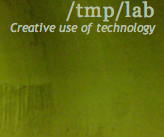Difference between revisions of "Chip Reverse Engineering"
From Tmplab
(→Abrasion) |
(legal?) |
||
| Line 85: | Line 85: | ||
= Software = | = Software = | ||
* http://hugin.sourceforge.net/ | * http://hugin.sourceforge.net/ | ||
| + | |||
| + | = Documentation = | ||
| + | * [http://www.chillingeffects.org/reverse/faq.cgi#QID195 Is hardware reverse engineering legal?] | ||
Revision as of 21:31, 20 November 2008
Contents
Microscope
Thanks to Karsten Nohl presentation at Hacker Space Fest, there's an interesting DIY approach for reverse engineering.
Now we have to find a microscope...
- Friend of Phil will lend a microscope with camera
- not perfect but should enable us to do the first etching/abrasive steps
- We'll try to select and acquire a perfect microscope for this job.
Features
These are the features we're looking for:
- 500x magnification
- 2 MP to 8 MP camera
- Objective table to move the chip slowly (i.e. not by hand, too much shaking and imprecision)
- Reflected (incident) lighting
Feature we DON'T NEED:
- Confocal microscope (it seems, because we'll abrase/grind away the upper layers anyway and the bottom layers are opaque anyway too)
Links
- http://www.microscopesinfo.com/olympusmicroscope/
- http://sci.tech-archive.net/Archive/sci.techniques.microscopy/2005-10/msg00004.html
- Comparison of different microscope imaging solutions
- Adaptor for standard cameras
- Moticam review and some tips
- ebay search for adaptators
- Custom made camera couplers
Perfect Microscope
Still selecting the right model.
Leads
- Ebay? No perfect match yet.
- Microscope.fr solution
- Different leads from microscope.fr website
- Euromex
- Euromex XE.5627 Discussion Microscope (299 EUR)
- Euromex AE.5175 Ball-beared mechanical stage (169 EUR)
- either Euromex DC.3200 CMEX-3 DIGI CMOS Microscope camera (3 MP) (989 EUR) or Euromex DC.1300 CMEX-1 DIGI CMOS Microscope camera (1.3 MP) (469 EUR)
- Total: from 937 EUR to 1457 EUR
- Bresser
- Bresser Trino Researcher II 40-1000x Microscope (349 EUR)
- Included mechanical stage
- Bresser PC MicrOcular 3 MP (289 EUR)
- Total: 638 EUR
Poor man microscope setup
- Microscope: 640x optical Bresser Biolux
- lent by Phil's friend
- Objective table:
- micro-screws controlled moving plate
- possibility to buy one: [1]
- Camera: 3.2 MP Canon Ixus V3
- Mounting: Attached directly to the eye-piece
- Drawback: produces round (not square) pictures (with no noticeable deformation) of smaller size/coverage than regular microscope-camera.
- Advantage: working and free
- Camera: 0.3 MP Ulead IC Chip camera
- Drawback: Low res.
- Advantage: square images, adapted for the scope.
Results so far
- Req: 500x magnification or higher
- This one goes up to 640x
- Req: 2 MP to 8 MP camera
- The Canon IXUS is 3.2 MP
- Will need to take more photo as just 2/3rd of the picture is usable (round pictures)
- Req: Objective table to move the chip slowly (i.e. not by hand, too much shaking and imprecision)
- Poor man setup with micro-screws, TO DO
- Req: Reflected (incident) lighting
- Reflected light works at lower magnification with daylight
- Even for microscope which is designed for see-through
- TODO: Need to buy adequate lighting. Got to test with external lighting (HB LEDs?) at higher magnification (640x)
Abrasion
- What kind of glue to use to attach the chip to solid/manoeuvrable support?
- Abrasive paste
